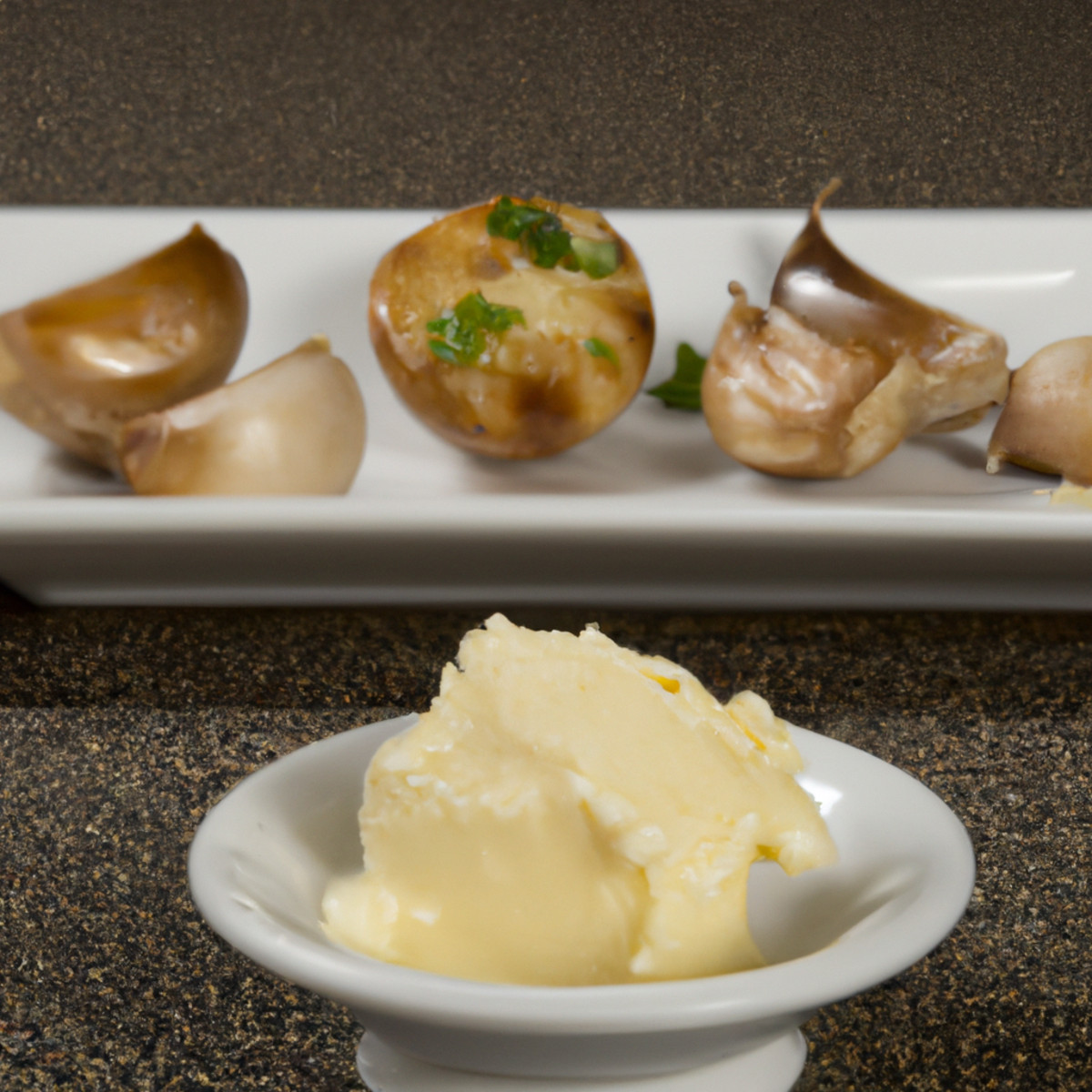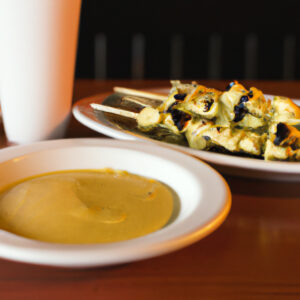Hibachi Butter Recipe: Savory Creamy Sauce for Flavor
Craving something savory? Look no further than this hibachi butter recipe!
With just a few simple ingredients, you can have a delicious meal that’ll tantalize your taste buds in no time.
It’s a great way to add flavor to any meal! Use it as a spread, dip, or topping for veggies, meats, and more.
Moreover, it’s quick and easy to make, so you can enjoy it anytime.

This hibachi butter recipe is sure to get your taste buds sizzling! With just a few flavorful but simple ingredients, you’ll have a delicious condiment that makes your mouth water.
So what are you waiting for? Let’s get cooking!

Check out our new cookbook
Bitemybun's family recipes with complete meal planner and recipe guide.
Try it out for free with Kindle Unlimited:
Read for freeIn this post we'll cover:
Make hibachi butter at home
Making hibachi butter yourself is great because it allows you to control the ingredients, ensuring that the butter is made with the freshest ingredients and your favorite flavors.
You can also customize the recipe to your taste, such as adding herbs, spices, and other ingredients for a unique flavor.

Hibachi butter
Equipment
- Bowl
- Spatula
- Container
Ingredients
- 2 sticks unsalted butter
- 2 tablespoons soy sauce
- 2 tablespoons sesame oil
- 2 tablespoons mirin
- 2 whole garlic bulbs
- 1 teaspoon ginger powder
- 1 teaspoon black pepper
Instructions
- Preheat your oven to 375 degrees.
- Cut off the tips of garlic bulbs and place them on a lined baking sheet.
- Drizzle both bulbs with olive oil and cover them with aluminum foil individually.
- Roast the garlic bulbs for 30 minutes.
- Meanwhile, whip the butter sticks and mix them with the other ingredients.
- After the garlic bulbs have cooled down, mash them until they achieve a paste-like consistency, and then add them to the mixture.
- Add a little black pepper, and whisk for a little more.
- Serve it just the way you like!
Cooking tips
Hibachi butter is a delicious, savory sauce often served with hibachi-style dishes.
It’s a simple sauce that can be made with just a few ingredients and is a great way to add flavor to any meal.
Here are some tips for making hibachi butter:
Always use unsalted butter
My first advice when making this recipe? Never use salted butter!
As hibachi butter also contains mirin and soy sauce, salted butter can make the recipe a little saltier than you would like.
If salted butter is all you have for some reason, use a quarter less mirin and soy sauce than the amount recommended in the original recipe.
Although your recipe won’t remain authentic that way, it won’t taste overwhelmingly salty. Plus, it won’t be super high in sodium either.
Use a mixer
Using a regular whisk would be enough to mix all the ingredients into a consistent paste.
But here’s the thing, no matter how good the results are, it is still no match for an electric mixer.
Besides, why waste time when an electric device can do it quicker and better? We are talking about restaurant quality stuff.
Use of substitutes with hibachi butter
Hibachi butter is a delicious and versatile condiment that is often served in Japanese cuisine. It is typically made with butter, soy sauce, garlic, and ginger.
However, if you are looking to make a healthier version of this condiment, there are several substitutions you can make.
Tamari sauce
You can substitute soy sauce for a healthier alternative.
Tamari, a gluten-free version of soy sauce, is a great option, as well as coconut aminos.
Both of these sauces are lower in sodium than traditional soy sauce and will substitute it in a 1:1 ratio just fine.
I’ve listed all possible soy sauce alternatives here that would work well for your recipe
Avocado oil
Don’t have sesame oil at hand or are allergic? No problem; you always have the option to use avocado oil instead.
While sesame oil has a very nutty, earthy flavor, avocado oil tastes like, well, you guessed it right, avocado.
However, that light touch of nuttiness and grassiness makes it a perfect choice. Use it in a 1:1 ratio for best results.
Garlic powder
Well, there are books one could write on the nutritious goodness of garlic.
But here, it’s just for the flavor. If you are watching your calories or bringing down the intensity of garlic flavor, you can substitute it for an alternative.
Garlic powder is an excellent option as it tastes similar to fresh garlic but is much easier to use (no roasting needed). You can add 1/4 teaspoon of garlic powder for the best flavoring in this recipe.
You can also use garlic-infused olive oil, which has a milder taste than garlic powder. It provides the recipe with the much-needed kick without making it overwhelmingly garlicky.
Fresh ginger
You can substitute ginger powder for a healthier alternative. Fresh ginger is an excellent option as it has a strong flavor and is packed with antioxidants.
Plus, nothing beats the aroma and taste freshly grated ginger brings to the recipe. Make sure to grate it finely so it blends well with the other ingredients.
Oh, and use it a quarter less than ginger powder, as it’s comparatively pungent.
How to serve and eat hibachi butter
Do you know what’s so great about hibachi butter? It’s not just a condiment that sides with your favorite meals.
Yup, it’s an all-in-one recipe that can be used to saute your favorite vegetable dishes, top your steaks, and even as a spread.
And as with many other hibachi dishes, there isn’t a unique traditional way to eat it. Just use it as you see fit!
Following are some good ideas you can try out with hibachi butter:
As a topping
Heat the butter in a pan on the stovetop over medium heat until it melts. Once it’s melted, pour it over the food you’re serving.
This could be anything from steak to vegetables. For a more flavorful experience, add spices or herbs to the butter before pouring it over the food.
As a side dish
When it’s time to eat, have a plate or bowl for each person.
Then, scoop some of the hibachi butter onto each plate or bowl. You can use a spoon or a ladle to do this.
Once the butter is on the plate, you can start eating. Use your fork or spoon to scoop up the butter and food together and enjoy.
As a condiment
Hibachi butter is a great condiment to side with your favorite dishes. I like to top it with fresh herbs like chime or parsley to make it even more flavorful.
While the condiment is quite enjoyable on its own, that extra kick from the freshly chopped herbs turns it into a super versatile, tangy, herby classic!
How to store hibachi butter
The best way to store it is in an airtight container. This will keep it from spoiling and also prevent any odors from escaping.
If you don’t have an airtight container, you can use a plastic bag or wrap it in plastic. Make sure to squeeze out as much air as possible before sealing it.
You should also store the butter in the refrigerator. This will help keep it fresh and prevent it from going bad for at least two weeks.
If you’re not going to use the leftovers within a few days, you should freeze them. This will help it last longer and keep it from spoiling.
When you’re ready to use the leftovers, thaw them in the refrigerator.
Please don’t leave it out on the counter, as this can cause bacteria to grow. Once it’s melted, you can use it as you usually would.
It’s also a good idea to label the container or bag with the date you stored it. This will help you keep track of when you need to use it.
Similar dishes to hibachi butter
Hibachi butter is a savory buttery sauce often served with grilled meats and vegetables.
It has a unique flavor that is both sweet and salty, with hints of garlic and ginger.
However, if you don’t have the ingredients or want to explore other Japanese flavors with your favorite dishes, you can always use teriyaki or yakitori sauce.
Both teriyaki sauce and yakitori sauce are Japanese sauces made with a combination of soy sauce, mirin, and sugar.
They both have a sweet and salty flavor and are often used to marinate or glaze meats and vegetables.
The only and main difference between the two sauces is that teriyaki sauce is thicker and sweeter. In comparison, yakitori sauce is thinner and savory.
However, butteriness is something that cannot be replaced with anything. So you better don’t expect any rich creaminess.
Nevertheless, they are both delicious and have a unique flavor that is sure to please.
Conclusion
Overall, this hibachi butter recipe is a great way to add a delicious, savory flavor to your meals. It’s easy to make, and you can use it in various dishes.
Plus, it’s a great way to get creative in the kitchen.
So, if you’re looking for a flavorful, versatile condiment, give this hibachi butter a try – you won’t regret it!
Butter is also what gives this Satsumaimo (Japanese sweet potato) recipe its creamy deliciousness
Check out our new cookbook
Bitemybun's family recipes with complete meal planner and recipe guide.
Try it out for free with Kindle Unlimited:
Read for freeJoost Nusselder, the founder of Bite My Bun is a content marketer, dad and loves trying out new food with Japanese food at the heart of his passion, and together with his team he's been creating in-depth blog articles since 2016 to help loyal readers with recipes and cooking tips.

